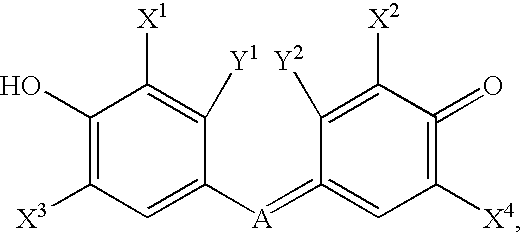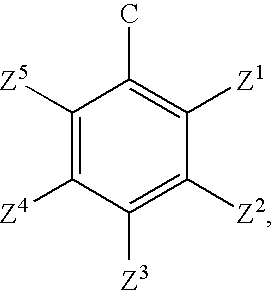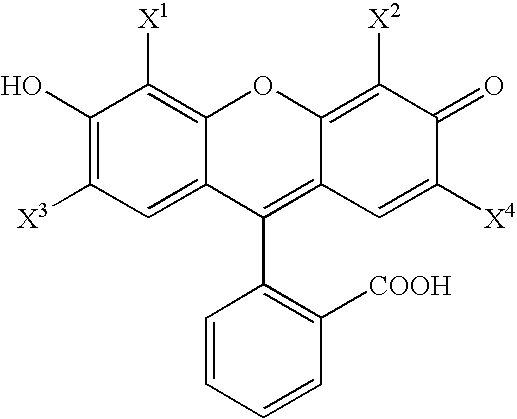Synthetic molecules for labeling histidine-rich proteins
- Summary
- Abstract
- Description
- Claims
- Application Information
AI Technical Summary
Benefits of technology
Problems solved by technology
Method used
Image
Examples
examples
Synthesis of Exemplary Zn-chelating compounds, 2′,7′-Bis(pyridyl-2-sulfonamido)-4′,5′-dimethylfluorescein, and 2′,7′-Bis(pyridyl-2-methylamino)-4′,5′-dimethylfluorescein
[0105]Phthalic anhydride, 2-methylresorcinol, 2-mercaptopyridine, fluorescein and ZnCl2 were purchased from Aldrich and received without further purification. Solvents were purchased from Fisher (HPLC grade) and dried by storage over 4 Å molecular sieves unless noted otherwise. 2-Pyridinesulfonyl chloride (J. Org. Chem. 1999, 64, 5896-5903) and 2-chlororesorcinol (JACS, 1941, 63, 544) were prepared according to literature procedures.
4′,5′-dimethylfluorescein
[0106]In a round bottom flask, phthalic anhydride (16.7 g, 113 mmol) and 2-methylresorcinol (24.9 g, 201 mmol) were combined and melted into a brown liquid at 150° C. Fused ZnCl2 (15 g, 110 mmol) was added over 40 min, and the temperature was slowly increased to 230° C. until all material solidified. The brick red solid was pulverized and boiled in 6M HCl for 30 m...
PUM
 Login to View More
Login to View More Abstract
Description
Claims
Application Information
 Login to View More
Login to View More - R&D
- Intellectual Property
- Life Sciences
- Materials
- Tech Scout
- Unparalleled Data Quality
- Higher Quality Content
- 60% Fewer Hallucinations
Browse by: Latest US Patents, China's latest patents, Technical Efficacy Thesaurus, Application Domain, Technology Topic, Popular Technical Reports.
© 2025 PatSnap. All rights reserved.Legal|Privacy policy|Modern Slavery Act Transparency Statement|Sitemap|About US| Contact US: help@patsnap.com



